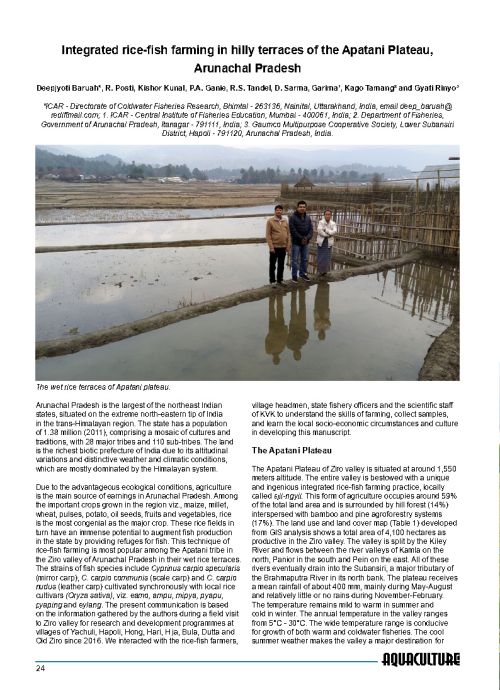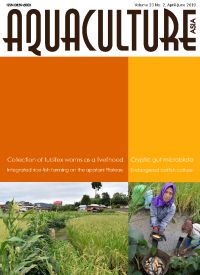Integrated rice-fish farming in hilly terraces of the Apatani Plateau, Arunachal Pradesh
2 May 2019 | Deepjyoti Baruah, R. Posti, Kishor Kunal, P.A. Ganie, R.S. Tandel, D. Sarma, Garima, Kago Tamang and Gyati Rinyo | 2208 Downloads | .pdf | 8.59 MB | Aquatic plants, Freshwater finfish, Gender, India, Inland aquaculture, Livelihoods, gender and social issues
Due to the advantageous ecological conditions, agriculture is the main source of earnings in Arunachal Pradesh, India. Rice is the major crop in the region, and in turn these rice fields have an immense potential to augment fish production through integrated farming techniques.
Rice-fish farming is a popular activity amongst the Apatani tribe of the Ziro valley, conducted in their wet rice terraces. The strains of fish cultured include mirror carp Cyprinus carpio specularis, scale carp C. carpio communis and leather carp C. carpio nudus, cultivated synchronously with local rice cultivars (Oryza sativa), viz. eamo, ampu, mipya, pyapu, pyaping and eylang.
This article describes the integrated farming practices and socio-economic circumstances of the Apatani in the Yachuli, Hapoli, Hong, Hari, Hija, Bula, Dutta and Old Ziro villages.
Creative Commons Attribution.

